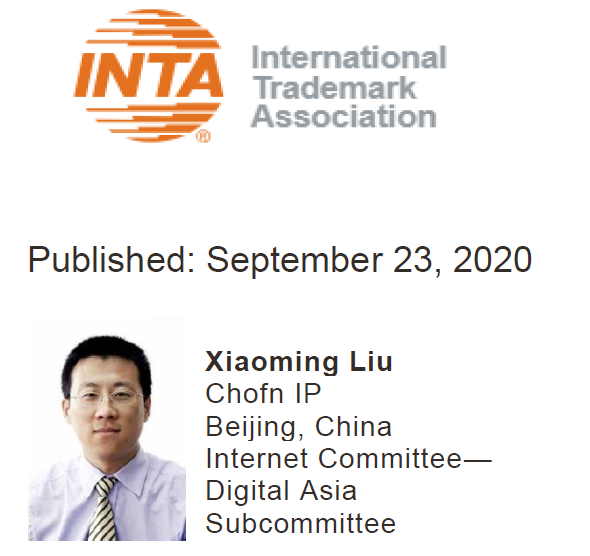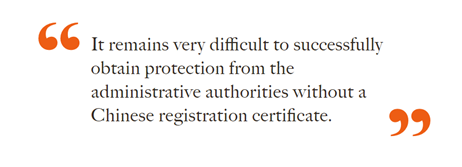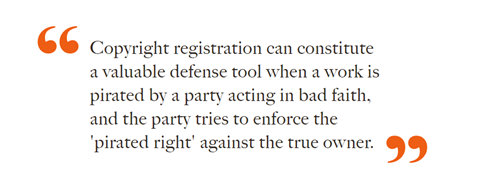
China is obligated to protect creators’ works under the Berne Convention, but a case can be made for registering copyrights in the country anyway.
As a member of the Convention, China must automatically protect copyrightable work by an author from another Berne Convention member. China cannot require the copyright owner to register the work as a necessary step for protection or enforcement. However, the matter is not so simple in reality, and copyright owners from China and abroad should consider registering their work in China despite the country’s membership in the international agreement.
Over and above the basic protection copyright registration provides, there are other advantages to registering a copyrightable work in China. This is especially true for copyright owners from outside China. Here is a look at the arguments for registering.As a member of the Convention, China must automatically protect copyrightable work by an author from another Berne Convention member. China cannot require the copyright owner to register the work as a necessary step for protection or enforcement. However, the matter is not so simple in reality, and copyright owners from China and abroad should consider registering their work in China despite the country’s membership in the international agreement.China is obligated to protect creators’ works under the Berne Convention, but a case can be made for registering copyrights in the country anyway.
The registration certificate is regarded as prima facie evidence of the existence of the copyright. This can reduce the burden of proof for the copyright owner. In China, it is necessary to prove the copyrightability, the creation date, and the authorship of the work when enforcement actions are waged.
However, if there is a copyright registration certificate, the aforesaid requirements have already been established during the registration process and the registration will be regarded as prima facie evidence. This significantly reduces the burden on the copyright owner. The burden might even be shifted to the infringer to prove that the work is not copyrightable or prove that the creation date and the owner indicated in the copyright certificate are true.
The registration certificate is almost a necessity for enforcement via the administrative route, though there are a very few exceptions. In accordance with Article 24 of the China Regulation for the Protection of Computer Software (1991), the registration of a software copyright with the software registration administrative organization is the prerequisite for the administrative settlement or litigation of software rights disputes. (The 1991 version is no longer in force. The current version was published in 2001 and was revised in 2011 and 2013, respectively.)
With this regulation no longer in force, there is no similar provision in the current regulation providing that copyright registration is a precondition for obtaining administrative protection from local administrative authorities, such as the Administration Market Regulation (AMR), or for obtaining judicial protection from the courts based on copyright.
It remains difficult to successfully obtain protection from the administrative authorities without a Chinese registration certificate. One reason for this is that officials from administrative authorities, including the local AMR, are not as experienced as judges in handling copyright cases. Without a certificate, it is difficult for the officials to determine important matters like copyrightability, creation date, and authorship of a work. Therefore, if an administrative complaint is filed based on copyright without a Chinese registration certificate, it is very likely that the administrative authority will not accept the complaint but suggest filing a lawsuit.

The registration certificate is de facto a prerequisite for enforcement on e-commerce platforms. It is increasingly common and necessary to enforce copyright on e-commerce platforms. For similar reasons as mentioned above, the e-commerce platforms are likely to reject a complaint filed based on a copyright without a Chinese registration certificate.
The registration certificate is a de facto prerequisite to seek protection through Chinese customs authorities. According to Article 7 of Measures for Implementing the Intellectual Property Protection Rules for Customs, when an applicant records its copyright in the IP Protection System of General Administration of Customs of China (GACC), the applicant should submit a copy of the certificate of voluntary registration of copyright issued by the copyright registration department.
Theoretically, it seems possible to solve this problem by filing some alternative evidence to prove the copyright, as stated in Article 7, but without a certificate it is very difficult to convince the GACC to accept the alternative evidence. (Article 7 states: “Where the applicant has not conducted voluntary registration of copyright, the applicant shall submit samples of the work that can prove that the applicant is the copyright owner and other evidence concerning copyright.”)
The registration certificate can facilitate procedures for bringing a lawsuit. In filing a lawsuit based on copyright, it is not necessary to have a copyright registration certificate, but it is usually far more time- and resource-consuming to convince the courts to accept the case without a registration certificate. Even if the lawsuit is successfully filed, without the certificate, proving the copyrightability, the creation date, and the authorship of the work is far more difficult for the plaintiff during the court hearing.
Notarization and legalization requirements can be avoided with a registration certificate. Without a copyright registration certificate, in a copyright dispute, a party needs to present other documents and evidence to prove the copyrightability, creation date, and authorship. If the documents and evidence come from outside China, notarization and legalization, plus authorized translation into Chinese, are usually required. If more than one dispute case arises, the party needs to repeatedly file notarized, legalized, and translated documents and evidence. This is very time- and resource-consuming. Instead, a copyright registration certificate can be used repeatedly. This will save resources and simplify procedures.
In addition, there are also benefits from a defensive perspective in registering the work.
In trademark cases, copyright registration can be a strong weapon in the fight against opportunistic trademark filings by others without limitation of classification.
China is member of the Nice Agreement and uses the Nice Classification system, made up of 45 classes of goods and services, for trademark registration. Usually, trademark registration should be obtained separately in the different classes. The more classes a trademark owner covers, the more cost- and time-consuming the process is. Because of this, brand owners often only register their trademarks in core classes, thereby leaving vulnerabilities for unauthorized use of trademarks.
For example, if a party registers a trademark registration in Class 25 only but not in the remaining 44 classes, that party may face difficulty succeeding with a trademark opposition or invalidation action in circumstances where the trademark is used without authorization by another party in a different class. That is to say, trademark protection is normally limited by the Nice Classification. However, copyright protection is not limited by such a classification system and can enjoy cross-class protection. As long as a trademark is identical with or confusingly similar to a prior copyrightable work, the trademark will be considered as infringing the prior copyright if registration is sought with no authorization by the copyright owner.
Copyright registration can constitute a valuable defense tool when a party acting in bad faith tries to enforce the “pirated right” against the true owner.
A party acting in bad faith might register a copyrightable work as a trademark, a design, or even a copyright. The party might then enforce such pirated right against the true right owner, putting the true owner in a disadvantageous situation, especially in e-commerce platform complaint cases. Most e-commerce platforms’ IP protection and complaint-response mechanisms are set up to solve disputes quickly and in a manner friendlier to the right owner.

If the true owner or the so-called infringer cannot provide simple and clear evidence in its response to the complaint to prove it is the true copyright owner, the response is likely to be regarded as untenable and the true owner’s products might be taken down immediately. However, if the true owner has a copyright registration certificate, even if the registration date of the certificate is later than the IP right pirated by the party acting in bad faith, it is likely that the e-commerce platforms will reject the complaint and recommend the concerned parties resolve the dispute through amicable settlement or before the courts.
There is also an argument that the copyright registration certificate be sought as early as possible. If the copyright is not registered until it is needed for a case, the opposite party, the authorities concerned, and the court might challenge the copyright on the grounds that it was registered simply to contest the adversary’s rights, especially if there is no substantial examination for such registration. As a result, stricter examination criteria will apply. Accordingly, even with a copyright registration certificate, the right owner might still be required to file additional documents and evidence to prove copyrightability, creation date, and authorship of the work: this can take more investment than would be the case if an application for copyright registration had been filed earlier.
If a party earlier registered a copyright in bad faith, it will be very difficult to cancel it. In a typical case, a party will pirate another party’s copyright by registering it in its own name with the China Protection Center for Copyright (CPCC). When the true owner seeks to cancel the copyright registration in the CPCC, it may find that there is not a simple procedure for cancellation comparable to filing an invalidation to cancel a registered trademark or registered patent. Instead, the only solution would be to file a lawsuit, and then, if successful, file the favorable court ruling with the CPCC. This can make the whole process of canceling a copyright registration lengthy and complicated.
Furthermore, even if a copyright is registered in another country with a well-established copyright registration system, such as the United States, it is still highly advisable to register the copyright in China. As mentioned, evidence from outside China should be notarized, legalized, and translated into Chinese before it can be used in legal proceedings in China. However, if the registered U.S. copyright is registered again in China, a Chinese certificate will be issued, which can be used directly and will be accepted by all the Chinese authorities without any notarization, legalization, or translation.
The importance and advantages of obtaining copyright registration in China cannot be stressed enough despite the theoretical automatic protection under the Berne Convention. It is even more important for a party outside China to register the copyright in China, and register it earlier, to enjoy protection more effectively and cost-efficiently in China.
Although every effort has been made to verify the accuracy of this article, readers are urged to check independently on matters of specific concern or interest.
© 2020 International Trademark Association
![]() Taking Precautionary Steps to Protect Copyrights in China.pdf
Taking Precautionary Steps to Protect Copyrights in China.pdf

